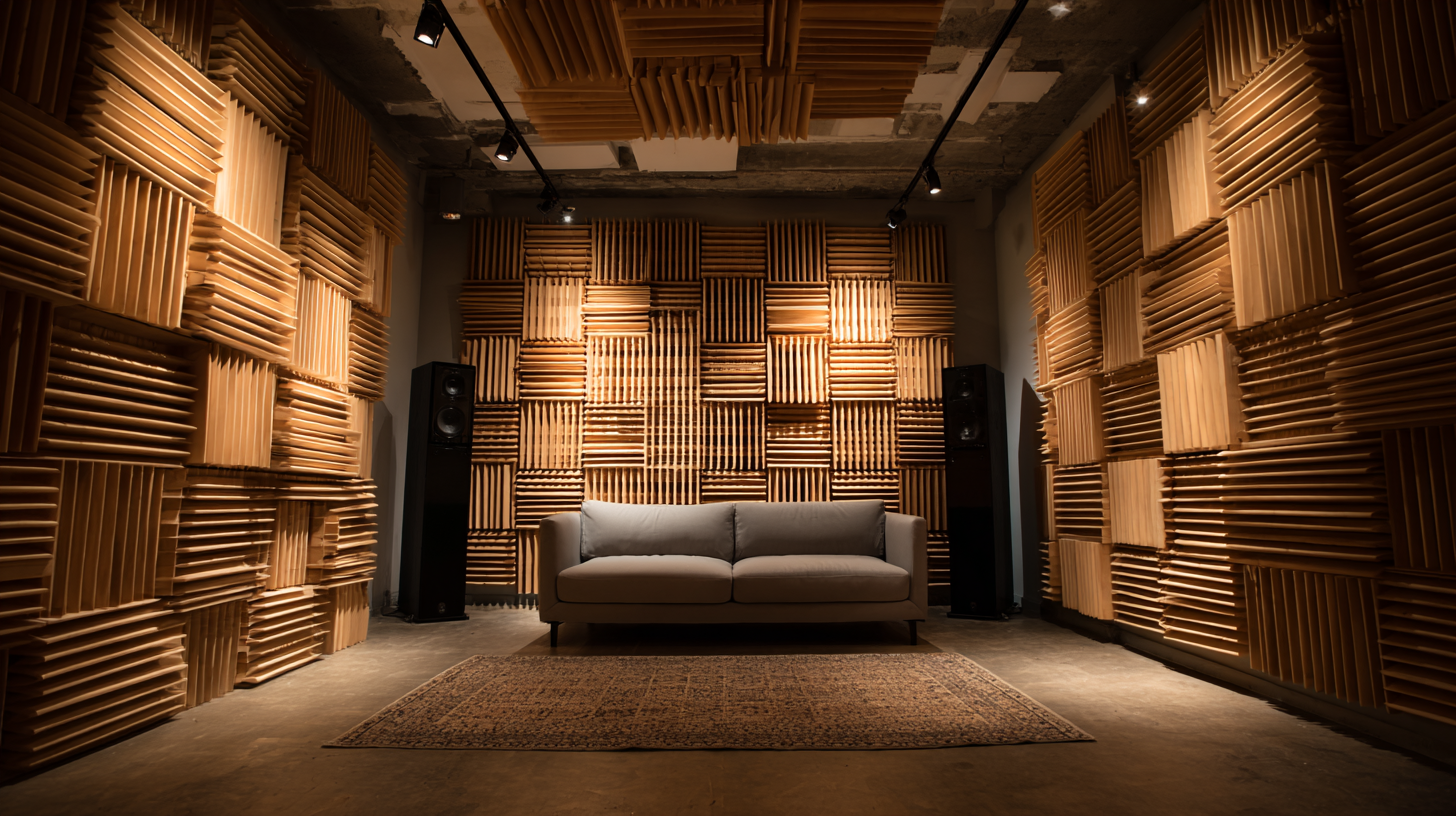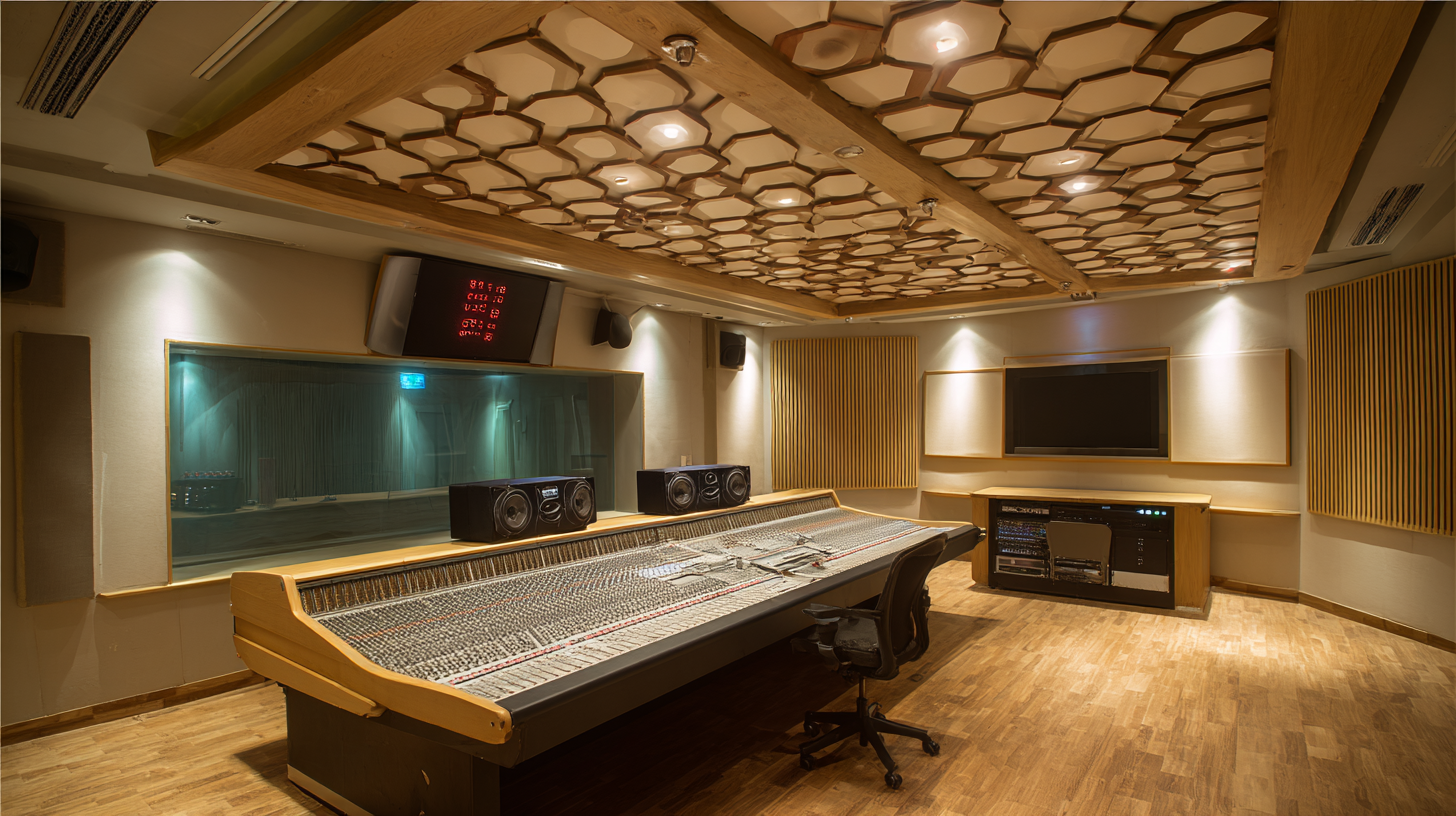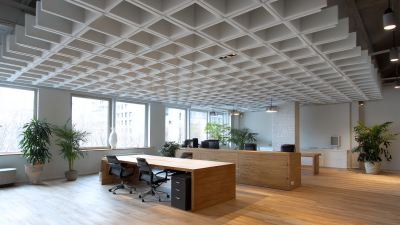Blog
Enhancing Acoustic Quality: How Sound Treatment Panels Reduce Noise Levels by Up to 50%
In today’s acoustically demanding environments, the need for effective sound treatment has become increasingly critical. A recent industry report from the Acoustic Society indicates that poor acoustics can lead to reduced productivity and increased stress levels in both residential and commercial settings. Sound treatment panels, proven to reduce noise levels by up to 50%, are essential tools in achieving optimal acoustic quality. By absorbing sound waves, these panels mitigate unwanted noise, creating a clearer auditory experience that enhances communication and concentration. With the right implementation of sound treatment panels, environments can be transformed, leading to improvements in overall well-being and efficiency. As we delve deeper into the benefits and applications of these panels, it’s evident that investing in sound treatment is no longer a luxury but a necessity for spaces aimed at fostering productivity and comfort.

Understanding the Basics of Sound Treatment Panels and Their Purpose
Sound treatment panels play a crucial role in enhancing acoustic quality by managing sound absorption and reducing noise levels. These panels are specifically designed to minimize echoes and reverberations in various environments, from homes to commercial spaces. Their primary purpose is to create a balanced auditory experience, ultimately improving speech clarity and reducing overall sound clutter. By incorporating advanced technologies, modern panels can effectively reduce noise levels by up to 50%, significantly enhancing the listening experience.
The latest innovations in acoustic treatment technology, such as the introduction of new generation panels with unique aesthetic designs, showcase the increasing importance of both functionality and aesthetics in sound treatment solutions. Many manufacturers are now focusing on bio-based insulation materials to not only boost acoustic performance but also address environmental concerns. This trend indicates a shift in the construction industry toward sustainable practices, highlighting that effective sound treatment can also align with eco-friendly initiatives, creating spaces that are both pleasant and responsible.
Enhancing Acoustic Quality: How Sound Treatment Panels Reduce Noise Levels by Up to 50%
| Panel Type | Material | Noise Reduction (%) | Ideal Use Cases |
|---|---|---|---|
| Acoustic Foam Panels | Polyurethane Foam | 40-50% | Recording Studios, Home Theaters |
| Fiberglass Panels | Fiberglass | 45-50% | Concert Halls, Offices |
| Fabric-Wrapped Panels | Mineral Fiber | 30-45% | Commercial Spaces, Classrooms |
| Wooden Acoustic Panels | Plywood or MDF | 35-60% | Music Rooms, Worship Spaces |
| Resonant Frequency Panels | Specialized Materials | 30-50% | Theaters, Home Cinemas |
Key Factors Contributing to Noise Reduction in Acoustic Treatment
Acoustic treatment panels play a crucial role in enhancing sound quality and significantly reducing noise levels in various environments. According to a report by the Acoustical Society of America, improper sound management can lead to a 50% increase in noise levels, adversely affecting productivity and well-being.

Key factors contributing to noise reduction include the absorption coefficient, panel thickness, and material density. Panels made of high-density materials, like fiberglass or foam, are particularly effective at absorbing sound waves, reducing echo and reverberation in spaces such as offices, recording studios, and home theaters.
To maximize the benefits of acoustic panels, consider these tips: firstly, strategically place panels in areas where sound reflects off hard surfaces to achieve optimal absorption. Secondly, ensure the thickness of the panels is adequate; thicker panels offer better performance in lower frequency ranges, thus improving overall noise reduction. Finally, regularly assess the acoustic performance of your space and adjust the treatment as necessary to maintain an ideal sound environment. By understanding these factors and implementing effective strategies, you can dramatically enhance your acoustic space.
Comparative Analysis: Sound Treatment Panels Versus Traditional Soundproofing
When comparing sound treatment panels to traditional soundproofing methods, it's essential to understand the distinct advantages that modern solutions offer. Traditional soundproofing typically relies on dense materials like fiberglass and foam, which can effectively reduce noise but often carry significant environmental impact. Recent studies indicate that bio-based insulation materials are emerging as effective alternatives, providing not only thermal and acoustic insulation but also improved sustainability. Reports suggest that these materials can enhance acoustic performance without the ecological footprint associated with synthetic counterparts.
Moreover, sound treatment panels, particularly those made from innovative bio-based materials, can reduce noise levels by up to 50%, according to industry research. This performance is traditionally attributed to the high absorption coefficients of these materials across various frequencies, which contrast sharply with the bulkier and less eco-friendly traditional soundproofing approaches. As the construction industry increasingly prioritizes sustainability, leveraging sound treatment panels with superior acoustic quality that are environmentally friendly points to a significant shift in design and engineering practices. The integration of technological innovations in sustainable materials not only enhances performance but also aligns with a growing demand for eco-conscious building solutions.

Real-World Applications of Sound Treatment Panels in Various Environments
Sound treatment panels have become increasingly essential across various environments, from bustling offices to serene home studios. According to a report from the Acoustical Society of America, improper sound management can lead to increased stress levels and reduced productivity, emphasizing the need for effective acoustic solutions. In open office spaces, sound treatment panels can significantly reduce distractions and echo, contributing to a quieter atmosphere. By installing these panels, businesses can achieve noise level reductions of up to 50%, fostering an environment conducive to concentration and collaboration.
In educational settings, sound treatment panels are equally vital. Studies show that background noise can hinder students' learning capabilities; the World Health Organization notes that excessive noise can impact cognitive skills and academic performance. Schools implementing sound treatment solutions report improvements in communication and information retention, further highlighting the importance of acoustic quality. Additionally, in spaces such as restaurants or cafes, where ambiance plays a critical role, sound treatment panels can create a more pleasant dining experience by absorbing excess noise and enabling comfortable conversation levels.
Tips for Selecting the Right Sound Treatment Panels for Your Space
When selecting sound treatment panels for your space, it is crucial to consider both the material and placement of the panels. According to a report by the National Institute of Standards and Technology (NIST), acoustic treatments can reduce noise levels by as much as 50%, making them essential for environments like recording studios and offices. Absorption materials such as foam, fabric-wrapped panels, and mineral wool are often recommended for optimizing sound quality. The density and thickness of the panels significantly influence their effectiveness; thicker panels are generally more efficient at absorbing lower frequencies.
Additionally, it is important to assess the room's specific acoustic challenges. For instance, rooms with hard surfaces tend to reflect sound waves, leading to echo and poor sound clarity. A study from the Acoustical Society of America emphasizes the importance of strategic placement. Installing panels at first reflection points can dramatically enhance the acoustics of a space. Understanding the unique acoustical requirements of your environment, such as ceiling height and wall materials, will guide you in choosing the right sound treatment panels to create a more controlled auditory atmosphere.
Enhancing Acoustic Quality: Noise Reduction with Sound Treatment Panels
Related Posts
-

Transform Your Space: The Ultimate Guide to Effective Noise Reduction Panels
-

Understanding the Science Behind Noise Reduction Panels and Their Impact on Acoustic Comfort
-

Transform Your Space: The Ultimate Benefits of Noise Reduction Panels for Home and Office
-

Exploring the Impact of Sound Absorption Panels on Industry Trends at the 138th Canton Fair 2025
-

Transform Your Space with Innovative Sound Reducing Panels for Ultimate Comfort
-

Exploring Noise Insulation Innovations: Insights from the 138th Canton Fair 2025 and Industry Growth Projections
